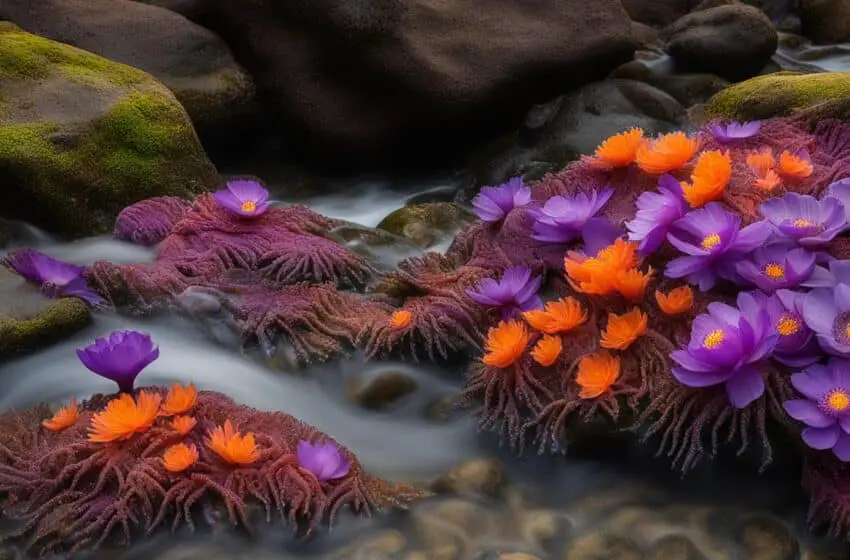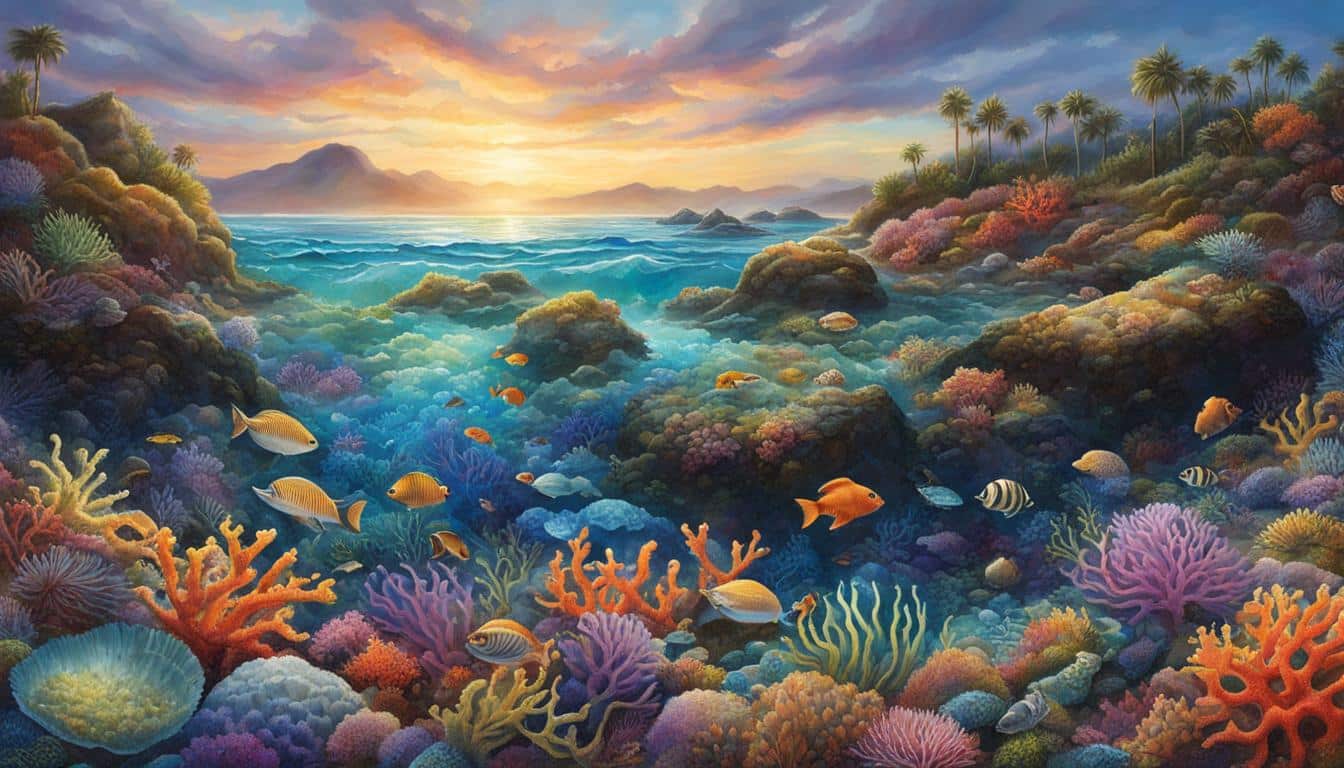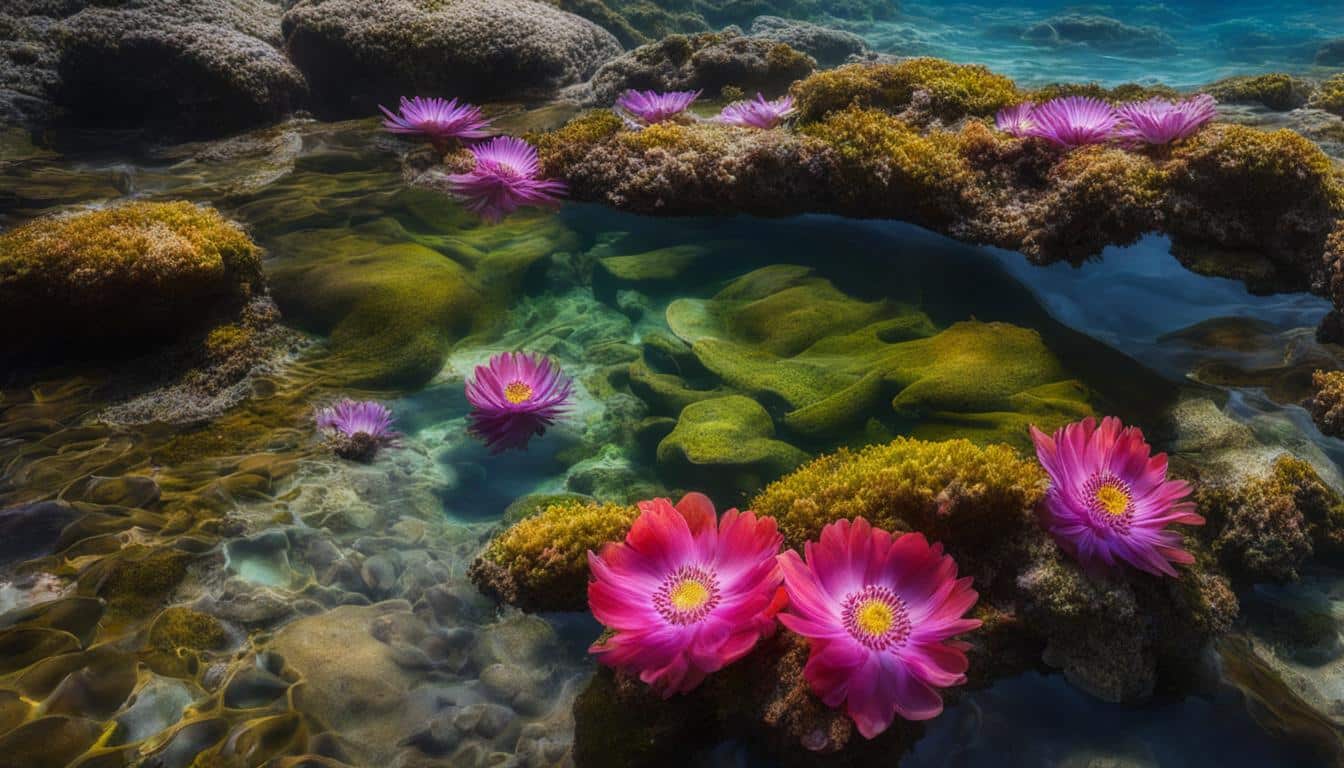Discovering The Marvels Of Tide Pools: Coastal Wonders Unveiled

Tide Pool: Tide pools, such as those found at Fitzgerald Marine Reserve in San Mateo County, California, offer a captivating glimpse into the world of anemones and other marine life. These rocky intertidal areas are home to a variety of colorful and unique species, including sea stars, mollusks, urchins, and sea slugs. The diverse adaptations and survival strategies of these creatures illustrate the harsh realities of the ocean ecosystem. Fitzgerald Marine Reserve, established in 1969, is a federally-protected sanctuary and one of the premier tidepooling spots on the California coast. It has attracted countless visitors and provides a rich educational experience for nature enthusiasts and science classes.
Key Takeaways:
- Anemones and other marine life thrive in tide pools, offering a captivating and diverse ecosystem.
- Fitzgerald Marine Reserve in California is a renowned tidepooling destination, providing educational opportunities for visitors.
- Tide pools illustrate the delicate balance and complexity of coastal ecosystems.
- Exploring tide pools across North America reveals the wonders and biodiversity of these unique environments.
- Prepare to be amazed by the vibrant colors and fascinating adaptations of anemones in tide pools.
The Fascinating World of Tide Pool Creatures
Tide pools have many interesting marine animals. They show us the diverse and fascinating world of tide pool exploration. Sea anemones are a highlight. Beautiful creatures with vibrant colors and graceful movements. They come in different shapes and sizes. They have tentacles with stinging cells that capture prey and defend against threats. Tide pools also have other fascinating animals like sea stars. These creatures can regenerate limbs when damaged. They come in many colors and patterns and help maintain balance in the ecosystem.
“Tide pools are like miniature underwater worlds, and each creature has its own unique adaptations for survival.” – Marine biologist Sarah Anderson
Mollusks, such as snails and limpets, also inhabit tide pools and display remarkable adaptations. Some cling to rocks using their specialized foot or secrete a slimy mucus trail, while others have rows of teeth to help them graze on algae. These fascinating adaptations highlight the incredible diversity and complexity of life in the intertidal zone.
| Tide Pool Creature | Main Characteristics |
|---|---|
| Sea Anemones | Vibrant colors, graceful movements, stinging tentacles |
| Sea Stars | Regenerative ability, wide range of colors and patterns |
| Mollusks | Various adaptations for clinging to rocks or grazing on algae |
The intricate interplay between different species in a tide pool ecosystem is truly mesmerizing. Sea slugs, for example, have been observed using anemone stingers as a form of defense, showcasing the complex relationships and dependencies that exist between tide pool exploration.
Exploring the fascinating world of tide pool creatures is not only a source of wonder but also offers valuable insights into the delicate balance of coastal ecosystems. The diversity and resilience of these species serve as a reminder of the importance of preserving and protecting these fragile habitats for future generations to enjoy.

Exploring Tide Pools Across North America
There are many places in North America where people can explore coastal ecosystems and see marine life. One of these places is Chesterman Beach in British Columbia, which has rocky coasts and sandy beaches for tide pool exploration. Shi Shi Beach in Olympic National Park has sea stacks and arches that provide a backdrop for many tide pool species. Yaquina Head Outstanding Natural Area in Oregon has rocky shores with tide pools that are home to many marine creatures.
Tide pool enthusiasts love the area. Rialto Beach in Olympic National Park is a great place to visit. Visitors can see tide pools and sea stacks. There are many creatures in the tide pools, like crabs and snails. The different species show how the tide pools work.
| Location | Main Attractions |
|---|---|
| Chesterman Beach, British Columbia | Anemones, hermit crabs, barnacles |
| Shi Shi Beach, Olympic National Park | Sea stacks, sea anemones, razor clams, sea cucumbers |
| Yaquina Head Outstanding Natural Area, Oregon | Rocky shores, sea stars, anemones, sea urchins |
| Rialto Beach, Olympic National Park | Tide pools, sea stacks, rock crabs, sea snails, eels |
Exploring tide pools across North America offers a fascinating opportunity to witness the intricate beauty and delicate balance of coastal ecosystems. Whether you choose to visit the rocky shores of Chesterman Beach or the dramatic pools of Yaquina Head, each unique location provides a captivating experience immersed in the wonders of marine life.

Conclusion
Explore marine life in tide pools for a unique and intriguing experience. Iconic tide pool animals like bright anemones, robust sea stars, and others demonstrate coastal ecosystem equilibrium. These complex ecosystems demonstrate marine species variety and adaptation.
At Fitzgerald Marine Reserve’s tidal pools or elsewhere in North America, uncovering each bloom’s secrets is thrilling. Explore and enjoy aquatic life on rocky coasts.
So put on your sturdy shoes and visit the tidal pools to be captivated by anemones in these coastal treasures. A small ecosystem, each tidal pool is full of life and shows nature’s resilience and beauty. Watching tide pool species interact shows how linked ocean life is.
FAQ
What can I expect to see in tide pools?
Tide pools are home to a variety of marine life, including sea anemones, sea stars, mollusks, urchins, and sea slugs. Each tide pool may have different species, but you can generally expect to find a diverse array of colorful and unique creatures.
Where is Fitzgerald Marine Reserve located?
Fitzgerald Marine Reserve is located in San Mateo County, California.
Is Fitzgerald Marine Reserve the only place to explore tide pools?
No, there are many other incredible locations across North America where you can explore tide pools. Some notable examples include Chesterman Beach on Vancouver Island, Shi Shi Beach in Olympic National Park, Yaquina Head Outstanding Natural Area in Oregon, and Rialto Beach in Olympic National Park.
Can I touch the marine creatures in tide pools?
It is generally recommended to observe the marine creatures in tide pools without touching them. Many of these creatures are delicate and can be easily harmed, so it is important to respect their habitat and not disturb them.
Are tide pools dangerous to explore?
While tide pools can be slippery and pose some risks, with proper caution and footwear, they can be safely explored. It is important to be aware of the tides and to stay aware of your surroundings to avoid any potential dangers.



